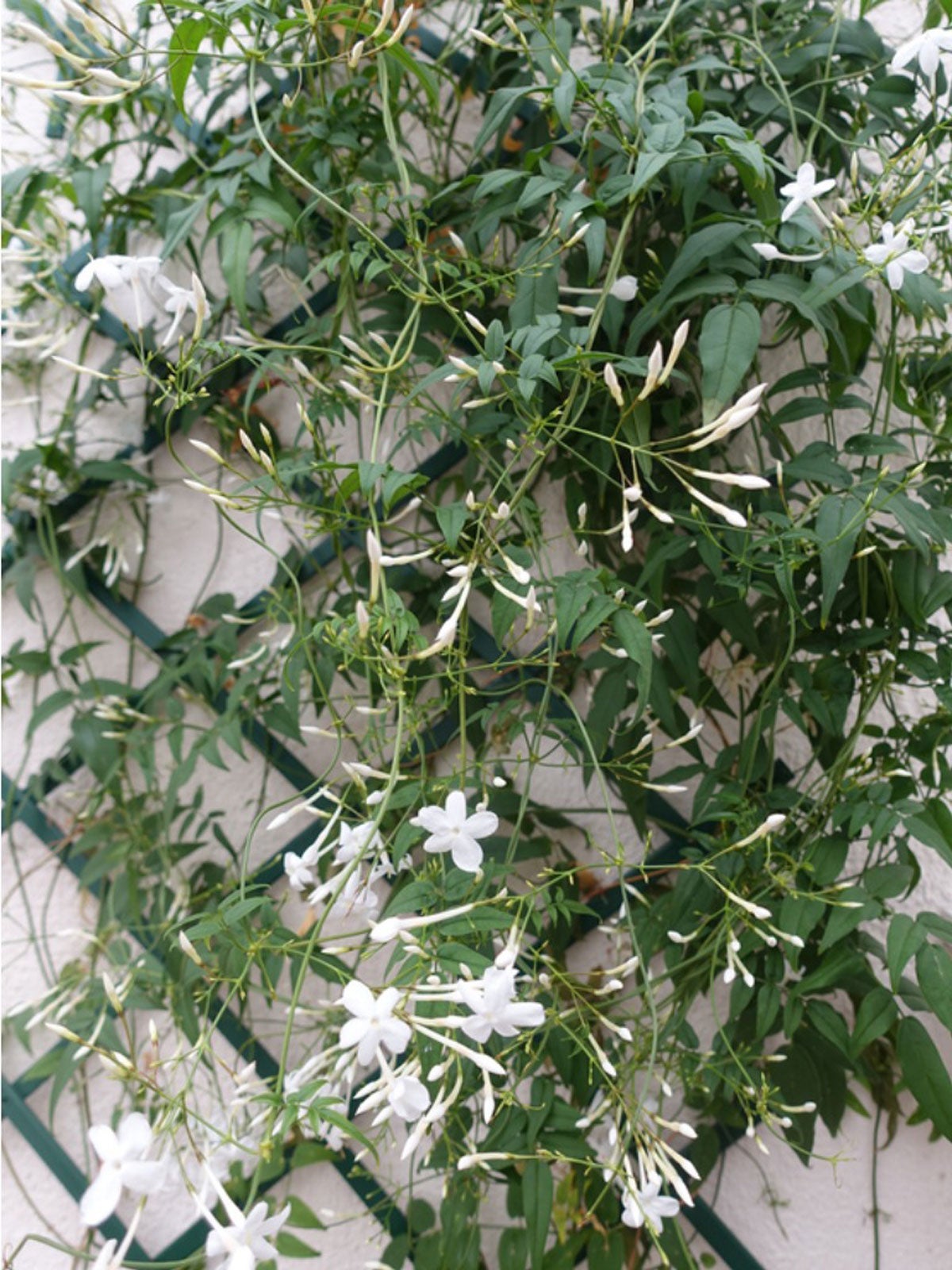How To Grow Jasmine On A Trellis: Tips For Training Jasmine
If you grow this fragrant vine, train it to grow on a jasmine trellis to keep it happy, healthy and doing what it does best - climbing and blooming.


Jasmine Trellis Training: Grow Jasmine on A Trellis
Jasmine is a beautiful plant that gardeners treasure for its intoxicating aroma. You can find many different types of jasmine. Some are shrubbier than others, but all create vines. Growing jasmine on a trellis is a great way to showcase this beauty and its aromatic flowers.
Trellises are simply supports for a plant to climb on as it grows, and they can be anything from a fence, lattice or frame, or even the side of a building, so the sky is the limit.
Jasmine Trellis Ideas
When creating a jasmine trellis, feel free to get creative. You can aim for symmetry or train the plant to grow a pattern or shape, like a swoop or swirl. Just be sure your trellis is sturdy enough to withstand having more weight on one side than another.
A good trellis for jasmine training should be sturdy and either supported by another structure or dug into the ground for stability. While jasmine is not necessarily a heavy plant, it can overwhelm a flimsy structure.
- A trellis situated against a wall lets a jasmine vine appear to climb the house. You can paint the trellis to match the color of the wall so it “disappears,” showcasing the vine.
- Another good idea is to use an arbor or pergola as a trellis. Train the vines to grow up and over it to create a flowering arch or entrance to your garden.
- A simple criss-cross grid structure made from wood or bamboo will work well for jasmine if the trellis is stable.
- Try a French version with an obelisk-shaped trellis that will allow the plant to grow up in the shape of the Eiffel Tower. This is a space saver, as well as being beautiful.
- If you are an ambitious do-it-yourselfer, try connecting pliable tree branches with garden twine or wire to create an interesting structure on which your jasmine can creep and cling.
- Old bed frames, wide chicken wire and many other materials can serve as a trellis for jasmine, as long as they are sturdy. Check online or your local garden center for ideas, and find materials you already have to help your jasmine plant along.
How to Train a Climbing Jasmine Plant
Start by situating your jasmine plant in the right location. Jasmine plants prefer full sun but can tolerate partial shade. They also like fertile, well-drained soil. Most types of jasmine require a warmer climate. If your area is borderline for growing jasmine, choose a sheltered location.
Decide where you’d like the jasmine plant to climb, then plant it right at the base and center of the trellis. If the type you have chosen is more vine than shrub, secure the base of the main vine to the base of the trellis. The shrubbier types of jasmine are more stable and don’t need to be secured at the base.
As the jasmine grows, attach vines and new growth to the trellis, and if appropriate, weave the branches in and out of the trellis. You can use any type of material to attach the vines to the trellis. Zip ties are easy to use, and you can snip off the ends to keep them looking tidy. Garden twine or soft strips of cloth are other good options.
Sign up for the Gardening Know How newsletter today and receive a free copy of our e-book "How to Grow Delicious Tomatoes".
Be sure to space out the new vines and side shoots as you attach them to the trellis. Overcrowding can lead to poor growth. If a side shoot is going in a direction you don’t like, redirect it or snip it off.
Once you have a shape you like, maintain it. Jasmine needs yearly pruning to stay tidy and an appropriate size. For varieties that flower on old growth, wait until the blooms are spent to prune. For all others, late winter or early spring are good times for pruning.
Frequently Asked Questions
Is Jasmine a Good Trellis Plant?
Yes, jasmine is a great choice for training to a trellis and is not as heavy as some vining plants. The holes in the trellis make it easy to use zip ties or other materials to attach the vines and new growth.
Which Jasmine is Best for Climbing?
Any jasmine can be trained to climb. Even shrub-like types like winter jasmine, for example, throw off vines that can be trained to a trellis. The types that are more vine than shrub are easiest to train and include white jasmine (Jasminum polyanthum), common jasmine (Jasminum officinale), and star jasmine (Trachelospermum jasminoides).

Mary Ellen Ellis has been gardening for over 20 years. With degrees in Chemistry and Biology, Mary Ellen's specialties are flowers, native plants, and herbs.